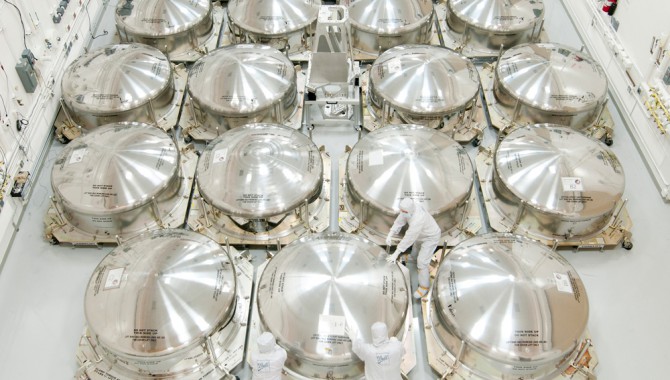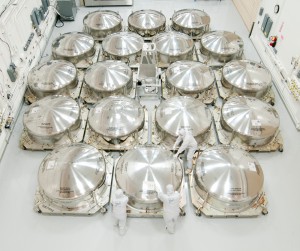
The powerful primary mirrors of the James Webb Space Telescope will be able to detect the light from distant galaxies. The manufacturer of those mirrors, Ball Aerospace & Technologies Corp. of Boulder, Colo., recently celebrated their successful efforts as mirror segments were packed up in special shipping canisters (cans) for shipping to NASA. Photo Credit: Ball Aerospace
Vol. 5, Issue 10
The NASA Inspector General has identified four challenges that can affect whether NASA projects meet their cost, schedule, and performance goals.

The powerful primary mirrors of the James Webb Space Telescope will be able to detect the light from distant galaxies. The manufacturer of those mirrors, Ball Aerospace & Technologies Corp. of Boulder, Colo., recently celebrated their successful efforts as mirror segments were packed up in special shipping canisters (cans) for shipping to NASA.
Photo Credit: Ball Aerospace
Project overruns are a perennial concern for NASA. The General Accountability Office (GAO) has published annual studies of selected large-scale NASA projects since 2009, which have highlighted some of the difficulties that specific projects have faced at different point in their respective life cycles. In an effort to gain insights about this recurring issue, the Inspector General conducted a study that drew on extensive interviews with project managers and top NASA officials, as well as a review of policies and procedures, project documentation, and existing reports about project performance at NASA.
The IG report identified four primary challenges to project success:
- NASA’s culture of optimism.
- Underestimating technical complexity increases cost and schedule risk.
- Funding instability can lead to inefficient management practices.
- Limited opportunities for project managers’ development.
The report concluded that these challenges “can only be realized through a ‘unity of effort’ that includes strong, consistent, and sustained leadership by the President, Congress, and NASA management.”
Read the full report. (PDF)









